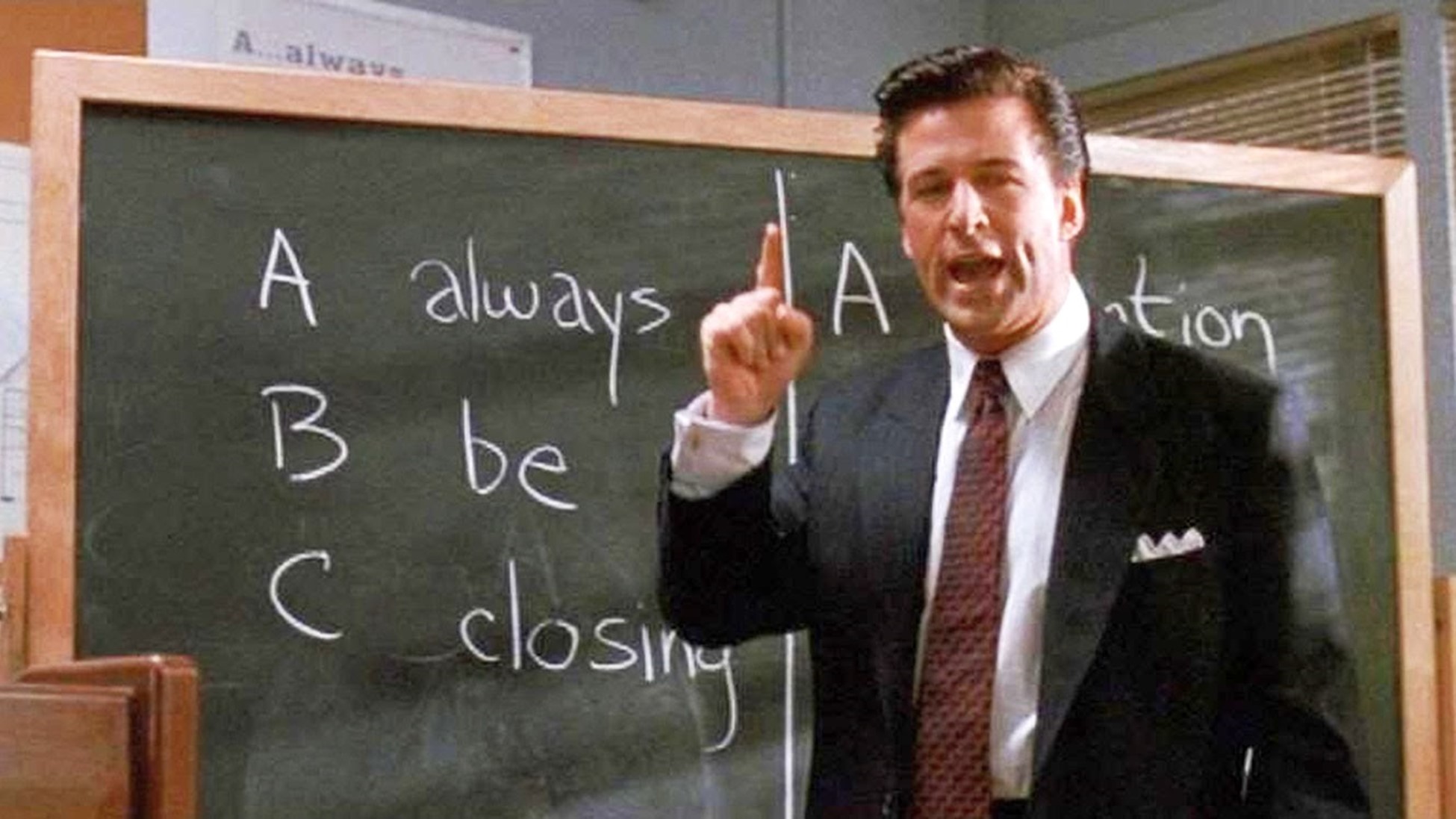
The first 90 days…. the honeymoon period… early wins… drinking from a fire hose… set the tone!
We’ve all read similar content over the years espousing the right and wrong way to transition to a new role or new company. The image of a hardnosed savior in a suit was the traditional stereotype. Think Alec Baldwin in the 1992 movie “Glengarry Glen Ross.”
A strong new leader, with a mandate from upper-level management or the Board of Directors, swooping in to save the day. The new leader will come equipped with all of the answers to what is holding the team or company back and will appear on the scene flanked with trusted lieutenants who follow the leader from company to company to lead and enforce the strategic pivot. The omniscient leader has all of the answers on Day 1 and immediately implements his or her new strategy and tactics to “turn around” an organization’s performance. It’s leadership by lightning bolt.
Over the years, I’ve been able to observe good leadership transitions and disruptive/distracting leadership transitions and hopefully I’ve learned from both. Through the twists and turns of a medtech career that has spanned almost 30 years, I’ve transitioned into at least 8 teams as the new leader or the newly promoted leader. Transitions are stressful, exciting and immersive and the more effective our transitions as leaders are, the faster the team can embrace the change, align on a new path and reach new heights of performance.
Knowing how different every transition is, I resist the urge to follow an exact recipe. Am I transitioning into a high performing team or an underperforming team? Is this a promotion or am I the new leader coming in from outside the company? Is this a start-up company or a Fortune 50 enterprise? Instead of establishing an exact transition playbook and dusting it off at every new stop, I keep core tenets top of mind and adjust accordingly. These core tenets have worked for me (in varying degree as I’m still learning and every situation is different) and I hope they’re helpful for your next transition too!
- Empathy – Remember what it was like for a new boss or manager to appear on the scene previously in your career. Change is a constant but that doesn’t mean change is easy. Be cognizant that your arrival as a leader will lead to uncertainty, possibly insecurity and some anxiety and act accordingly. Maybe one of your new direct reports hates change. Or was close to the previous manager. Treat everyone how you would have liked to have been treated by your previous managers.
- Air Cover – Ensure support for your transition plan before you start. Alignment with the senior leadership team, CEO and Board of Directors is crucial. Explain your priorities for the first 90-180 days. Seek feedback. Communicate regularly with key stakeholders as you progress through your transition. Be as transparent as possible about your learnings.
- Learn – Everybody has opinions. During your recruitment, opinions will be shared about strategies, marketing messages and especially about existing talent. Take these all as data points but not necessarily as gospel. I like to get out “in the field” as soon as possible and as frequently as possible in the first 90-180 days. By meeting with key customers, skeptics and the sales team I’m able to hear the good, bad and ugly. I’m able to assess the customers’ experience with our product/service and support. I’m able to build credibility with the sales team in order to positively influence marketing messages, bolster HQ support and impact future compensation plans. Challenge yourself to stay humble and ask questions constantly. You don’t have all of the answers. Nobody does. After the learning “road show,” I usually have a clear understanding of how the current tactics are working, what needs to be adjusted and who on the team is ready to execute. Travel certainly doesn’t stop after the initial road show period. The closer you stay to the end users and territory managers, the more relevant the strategies and tactics. Also, when your executive team sees you travel regularly, they’ll hopefully embrace the new expectations and realize their contributions are better the closer they are to “the field” as well.
- Communicate – Proactively keep stakeholders and your new organization apprised of your learnings. Seek feedback. Refine your questions and update your previous assumptions. Engage the entire organization and infuse a transparent culture of ideas welcoming to everyone regardless of role and level. Even though you’re a senior leader or the senior leader, you are not the Oracle of Delphi. Don’t pretend to have all of the answers.
- Speed – This is perhaps the toughest component to assess. While you want to be thoughtful and deliberate during your intense learning phase so as to not cause too much anxiety or disruption, the clock is ticking and the burn rate (in a start-up) is on your shoulders. When your talent assessments (do I have the right people in the right seats?) are clear and your new strategy or pivot is ready…Go! Don’t wait. One time I moved too quickly to implement the new way. One time I was probably not fast enough. Try to find the right balance.
- Measure – After implementing the new plan, the key metrics need to be visible. How will you know if the new tactics are working? How will you show the Board progress?
“Wisdom tends to grow in proportion to one’s awareness of one’s ignorance.” – Anthony de Mello
How am I being perceived so far? What can I do better? Am I resonating with the new team and building the right level of credibility? As a leader transitioning into a new role or new organization, self-awareness will be a guiding light.




